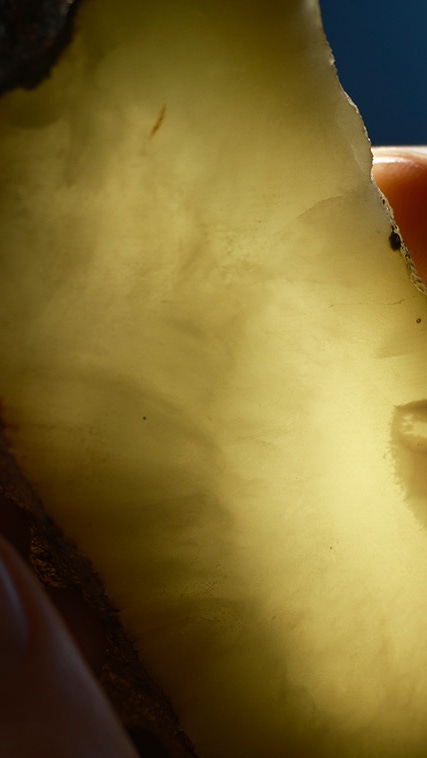Media
Ressourcenknappheit: Rohstoffhunger der Energiewende
Dare we dig deeper?
The world is rapidly moving towards green energy production, which requires huge amounts of certain minerals. Extracting those materials will have a massive impact on ecosystems and surrounding communities. Two experts on the question: Is it worth destroying nature to save the climate?
At a glance:
-
On our way to energy transition, it is crucial to make the mineral extraction process fair and environmentally friendly.
Local communities and policymakers must be involved. -
Recycling minerals plays an important role, but currently, there are not enough stocks in the system. Artificial intelligence could help develop products like batteries that require fewer rare minerals.
-
Higher prices are expected for in-demand minerals – this could slow down the global energy transition. Unless the profits are distributed fairly.
Rising demand for scarce resources
Wind turbines, solar panels and electric car batteries – they are all needed for green energy and necessitate huge amounts of certain metals, such as lithium, copper, nickel or cobalt. As a result, global demand for these key minerals is expected to double and may even come close to quadrupling by 2050, based on estimates by the International Energy Agency.
If we are to achieve net zero emissions, we’ll have to increase mining efforts in many parts of the world. However, there’s a caveat: Few other industries have a more devastating effect on the surrounding environment. Is there a way out of the raw material dilemma? Creating Chemistry has invited two experts to this conversation. How do they weigh the options?
More mining for a sustainable future?
The International Energy Agency is projecting that demand for the metals needed for the green transmission will increase dramatically. So, do we need much more mining in the world?
DANIEL FRANKS: The renewable energy transition will require a larger amount of minerals that we haven’t been mining a lot, like lithium and cobalt. On the other hand, we will need a lot less of raw materials like coal, for example. Overall, the amount of mining might even be less.
Mining these much-needed minerals will come at a cost. Ecosystems will be destroyed, workers will suffer from medical conditions. The negative effects are being discussed in many parts of the world.
DF: There are practices to significantly reduce the social and environmental impact. For them to be applied, the process of producing the minerals must be just and equitable. Local communities and governments need to be involved. Otherwise, the transition itself will be undermined.
MATHIS WACKERNAGEL: There are more and less harmful ways to obtain these minerals. Our biggest challenge is that our demand, the size of the human economy, has become much bigger than what Earth can renew. Using certain minerals might help us move away from depleting Earth’s natural resources. What I’m getting at: The cost of not transitioning the economy is much higher.
How do you calculate that cost?
MW: I look at the world through a biological lens. Our accounts show that human use of Earth is about 1.7-fold the amount our planet can renew from a biological perspective – food, timber, fibers, absorbing excess CO2 from fossil fuels. Some of that is used to extract and process minerals. A reasonable question would be: What amount of our planet’s resources can be used in a sustainable way? Ecologists say about half the regenerative capacity of the planet, if we also want to maintain biodiversity and have a resilient planet.
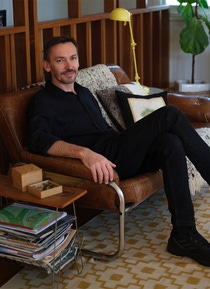
Local communities and governments need to be involved.“

Reducing resource consumption
Roughly put: We’d have to cut our consumption of pretty much every natural resource by three.
MW: Not every resource, but on average, this is correct. And we do not actually have to. Overuse, or overshoot as we call it, will end, the question is whether by design or disaster. Using 1.7 Earths is a market failure. We can therefore ask ourselves, how much higher would the prices of raw materials need to be to reduce material demand from 1.7 Earths to 0.5 Earths? The price might be so high that our economies could no longer operate properly – which just shows how far off balance we are. On the other hand, not adapting to that new world of 0.5 Earths is far, far more expensive as it would deplete the regenerative capacity of Earth on which every value chain depends. We don’t pay the price now, but it’s on the balance sheet. Not paying for the transition now will turn into a massive liability.
So transitioning to renewable energy is our only choice and there is no alternative to accelerating large-scale mining?
DF: Some people say because of the energy transition we need to somehow fast-track the approval of mining projects. I’m not one of those people. Despite the time pressure, we should put high environmental, social and governance standards on the extraction of minerals: That will create projects that have more resilience.
Because they create less political backlash?
MW: And economic ones, too. The reason why the overuse of the planet is so dramatic is because we don’t pay fair prices for resources. Look at the provision of carbon credits, for example.
These are permits that allow companies to emit a certain amount of greenhouse gases. Similarly, there are compensation payments that are designed to offset the CO2 emissions.
MW: They are still in the beginning stages, but they could help move economies towards a fairer compensation of those who provide minerals and the regenerative resources, including carbon sequestration. But the way it’s often done now, very little financial value from the carbon credits flows back to the countries where the credits are actually produced. So those countries are legitimately skeptical about providing the rights to produce carbon credits.
They do so by preserving natural habitats, for example. But carbon markets are largely unregulated.
MW: Yes, they are poorly regulated. But the supply of resources would be much more reliable if a larger portion of the value chain these resources enable would go back to those countries and caretakers who provide the resources. This is true for both minerals and biological resources.
DF: Let’s take lithium, for example. Over the past 20 years, Latin America has exported roughly 2,000 kilotons of lithium, and it imported 13 kilotons back in highly priced products, which is more than 150 times less. They just don’t have access to their own minerals, which are needed for the transition. There’s a huge justice and equity issue that we need to think about. Human security needs to be fostered in all its forms – energy, water, food and mineral security – so that all people have sufficient and affordable access to the resources that they need for human development.

Point taken. But why would mining companies share their profits with anyone other than their shareholders?
DF: The industry has been making a transition. For many years, it rejected the central elements of sustainable development, up until around about 2000, when it underwent huge pressure from civil society movements around the world about its performance. In the 25 years since then, it’s made some progress in some places and little progress in others.
That’s not very reassuring.
DF: We can no longer assume that a mining company is always a multinational giant, and that it has no relationship with its local setting. There are indigenous-led mining companies now, in Australia and Canada and other parts of the world. They have a totally different perspective, making sure that employment, development and environmental goals are being set and achieved. And that kind of innovation will feed into the multinational mining companies and junior companies as well.
We don’t pay fair prices for resources.“
Resource scarcity: making limited minerals last forever
So sustainable mining is possible, you say. Does that equal renewability?
DF: My view is somewhat different from Mathis’. Renewability matters more for biological systems. But we’re talking about geological systems here. These are the forgotten elements of nature, as I like to call them. Minerals are not even mentioned in the United Nations Sustainable Development Goals. The world has come to think that renewability is the arbiter of what is sustainable. But most of the minerals that we’re talking about for the energy transition are not renewable in human time scales, in terms of their geological production. Instead, they’re infinitely renewable. Most of them are not really consumed during production or use. We can always recycle them and use them again. So they’re basically going to be in stock forever.
And each of us owns a part of that stock, in our smartphones, laptops or vehicles. The question is: How much stock will we eventually need?
DF: There are projections by the International Energy Agency. But I think consumers will ultimately decide which products they prefer. That will change the demand for different commodities. But the markets for those commodities are not functioning well these days. We are seeing booms and crashes for lithium and nickel and other minerals. So it’s hard for the industry to properly plan for that process.
MW: It’s important from a government’s perspective, too. Among the economic development plans of countries, I haven’t seen many, if any, apart from China, that take resource security seriously. But nations that want to secure a successful future would each need to do that for themselves.


BASF perspective
Talke Schaffrannek is Director of Circular Economy at BASF in Ludwigshafen. She explains how BASF keeps minerals in circulation and why a new mindset is needed for sustainable change.
Higher prices for urgently needed minerals are to be expected. This, in turn, will slow down the global transition in the energy sector.
DF: I don’t necessarily think that producing minerals responsibly will result in a higher-priced end product. To keep prices in check, we need more equitable distribution of the revenue along the value chain. Higher standards, environmental, social, labor-related, don’t necessarily increase the cost of production – in fact it’s the irresponsible projects that often face huge delays and disruptions.
That sounds counter-intuitive.
DF: Keep in mind, minerals are located where they are. It’s not like a factory where you can move to a low-priced jurisdiction. Major costs are incurred by mining projects when they lead to conflict with local communities, indigenous peoples and governments. Because it’s fairly easy for governments and local communities to place significant pressure on those companies and halt or disrupt their production. I have published a major study on this topic. We are talking about hundreds and hundreds of millions of dollars lost when projects get delayed or stopped.
Okay, let’s assume companies adjust and deploy more environmentally friendly and economically fair ways of mining. You mentioned that most of these minerals are easily renewable. So recycling is really the final objective?
DF: Sure, recycling is a big part of the planning for energy transition minerals. However, there is currently not nearly enough stock in the system. And when there is enough stock, sometime in the medium term, that stock will likely be in high-income countries. Low-income countries won’t have access to that stock.
So access to recyclable material is the upcoming conflict the world needs to solve?
DF: Some people have been talking about the idea of minerals as a service. Producing countries rent or continue to get paid a royalty each time the mineral is transformed. This way, they can get back some value once it’s continually recycled over time and in stock elsewhere.
MW: Going back to the biological perspective, we will run into regeneration constraints far before we run out of minerals. The limiting factor for accessing minerals is the energy it takes to concentrate and recycle them. And that energy is limited by how much biosphere we are willing to give up to make that happen. Again, we need to ask: What kind of service will be most valuable in the future? Companies using recycling and those that are providing the kind of service Daniel described will have a value advantage.
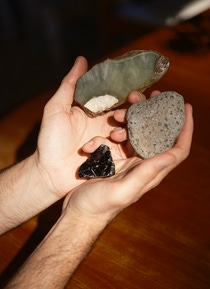
Do you think technologies could be developed that will not require this amount of lithium, copper and the like?
MW: I expect artificial intelligence to help us develop batteries that are much more recyclable and can use fewer fancy minerals and metals. That makes it even more difficult to project what kind of minerals may be needed in the future.
DF: Right. For example, researchers are talking about sodium batteries and other types of chemistries. And it’s not just the technologies that will evolve, but also the way we plan our societies. For example, electrified mass transit would consume much less mineral resources than if we all drove individual cars. There would be a much lesser need for battery minerals.
Once we have built up stock and abandoned most mines, what will we leave behind at those sites?
DF: That’s a huge priority in Australia where I’m located. Colleagues of mine have been visiting many sites to find out where there’s value in the waste left behind. Extracting that value could turn up commodities we are looking for. At the same time, the revenue could be used to rehabilitate and restore those sites.
MW: Toxic waste legacies are a problem that needs to be addressed. But then, some of the most beautiful gardens I’ve seen are old quarries. It’s possible. We just have to make the effort.
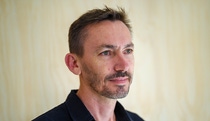
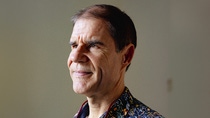
Professor Daniel Franks
is a geologist at the University of Queensland’s Sustainable Minerals Institute in Australia. His focus is on the interconnections between minerals, materials and sustainable development. Franks comes from a mining family, which explains his great fondness for rocks. At the same time, he is developing plans to exploit minerals in a way that preserves ecosystems and communities.
Dr. Mathis Wackernagel
is a co-founder of Global Footprint Network, an independent think tank promoting tools to advance sustainability. He was among the scientists who came up with the idea of ecological footprints of human activity, which has been used by climate activists. He also laid the groundwork for Earth Overshoot Day, the day when humanity’s demand for resources exceeds what our planet can regenerate.
